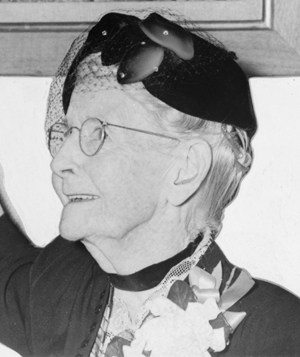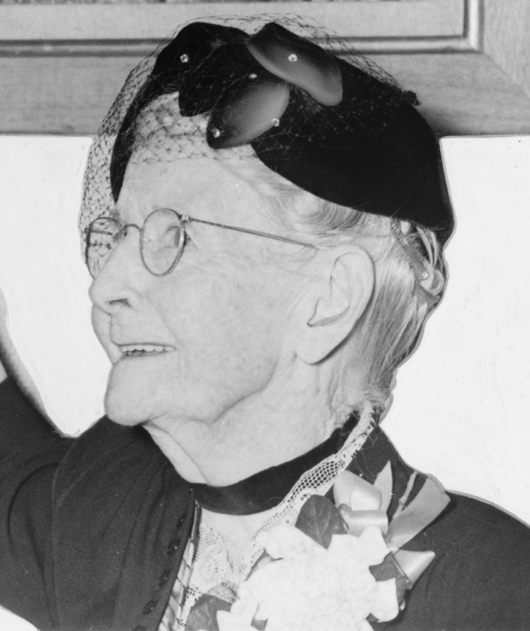
RICHMOND, Va. (AP) – Virginia is recognizing the Shenandoah Valley farmhouse where Grandma Moses lived briefly with her family long before she gained fame for her folk-art painting.
The Department of Historic Resources has approved Moses’ two-story brick farmhouse in Mount Airy for a place on the Virginia Landmarks Register, an ever-growing list of his historic properties, items and places. It was among 17 historic sites added to the register in July.
Anna Mary Robinson Moses, her husband Thomas and their children lived in the 1850-vintage house in 1901 and 1902. They lived in the Staunton area from 1887 until 1905, when they returned to upstate New York to farm. The Mount Airy property is the most intact of the surviving houses where the Moses family lived during its time in Augusta County.
Moses died in 1961 in Hoosick Falls, N.Y. She was 101.
While Moses spent most of her remaining years in New York, her prolific life as an artist reflected her years in Virginia. At least 38 of the 1,000-plus paintings she produced depict scenes in Virginia, according to historic resources. Many titles mention Staunton or the Shenandoah Valley.
Besides the Moses property, the other additions and descriptions provided by historic resources are:
– The Contrabands and Freedmen Cemetery in Alexandria, one of the only known burial grounds in the U.S. established and run by the federal government for African-Americans during and immediately following the Civil War. It is the final resting place for 1,711 men, women and children. The city plans a memorial to the cemetery, which was lost to development in the mid-1950s.
– The F.D. Crockett, constructed in 1924, a Poquoson-style log-hulled boat used by Chesapeake Bay watermen and one of only two known to exist. It is owned by the Deltaville Maritime Museum.
– Briarwood, a Tudor-Revival-style house built in 1932 in what was then the young resort city of Virginia Beach.
– Riverlawn, constructed in 1874 in Mathews County, was the former home of community leader and businessman John J. Burke III.
– Furr Farm in Loudoun County, the site of a fierce cavalry skirmish during the Civil War Battle of Aldie in June 1863. Dating to 1790, portions of the farm served as a field hospital.
– Galemont in Fauquier County is a 237-acre farm, including a house dating to the late 1700s. Traces of a Colonial-era road through a mountain pass remain visible today.
– Georgetown Pike, in Fairfax and Arlington counties, was constructed between 1813 and 1827 to connect Georgetown markets with agricultural and manufacturing interests in Leesburg and beyond. In the 1920s, Georgetown Pike was adapted as a toll road for automobiles.
– Lovettesville Historic District in Loudoun County includes the town’s core and settlement-era cemeteries and a church, remnants of the German immigrants who settled it. It was among a handful of Virginia communities that opposed secession and supported the Union as the Civil War loomed.
– Sydenstricker School in Springfield, the last one-room schoolhouse built before school consolidation in Fairfax County. It closed in 1939.
– Four Richmond entries: the Armitage Manufacturing Co. building complex in Richmond, which produced building supplies and roofing paper and cardboard containers; the Forest Hill Historic District, a trolley car suburb south of the James River; the Southern Biscuit Co. building, dating to 1927, and the first company to produce Girl Scout cookies; and Three Chopt Road Historic District, which encompasses a 1.3-mile stretch of Three Chopt Road on the city’s west side. It has a collection of architect-designed upscale houses and churches.
– Armstrong School in Lynchburg, built for African-American students during Virginia’s era of segregated schools.
– Seays Chapel Methodist Church, a modest Gothic Revival Church in Fluvanna County built in 1893. It remains an active place of worship.
– Clifton Forge Residential Historic District in Alleghany County, covering 174 acres of the town’s original center. It is associated with the period of growth and prosperity of the Chesapeake and Ohio Railway.
The Board of Historic Resources also approved an expanded boundary for the Fort Monroe Historic District in Hampton. It includes buildings and structures constructed by the U.S. Army between 1819 and 1960.
___
Steve Szkotak can be reached on Twitter at http://twitter.com/sszkotakap.
___
Online:
Virginia Landmarks Register: http://www.dhr.virginia.gov/registers/register.htm
Copyright 2012 Associated Press. All rights reserved. This material may not be published, broadcast, rewritten, or redistributed.
AP-WF-07-07-12 1858GMT
ADDITIONAL IMAGE OF NOTE


